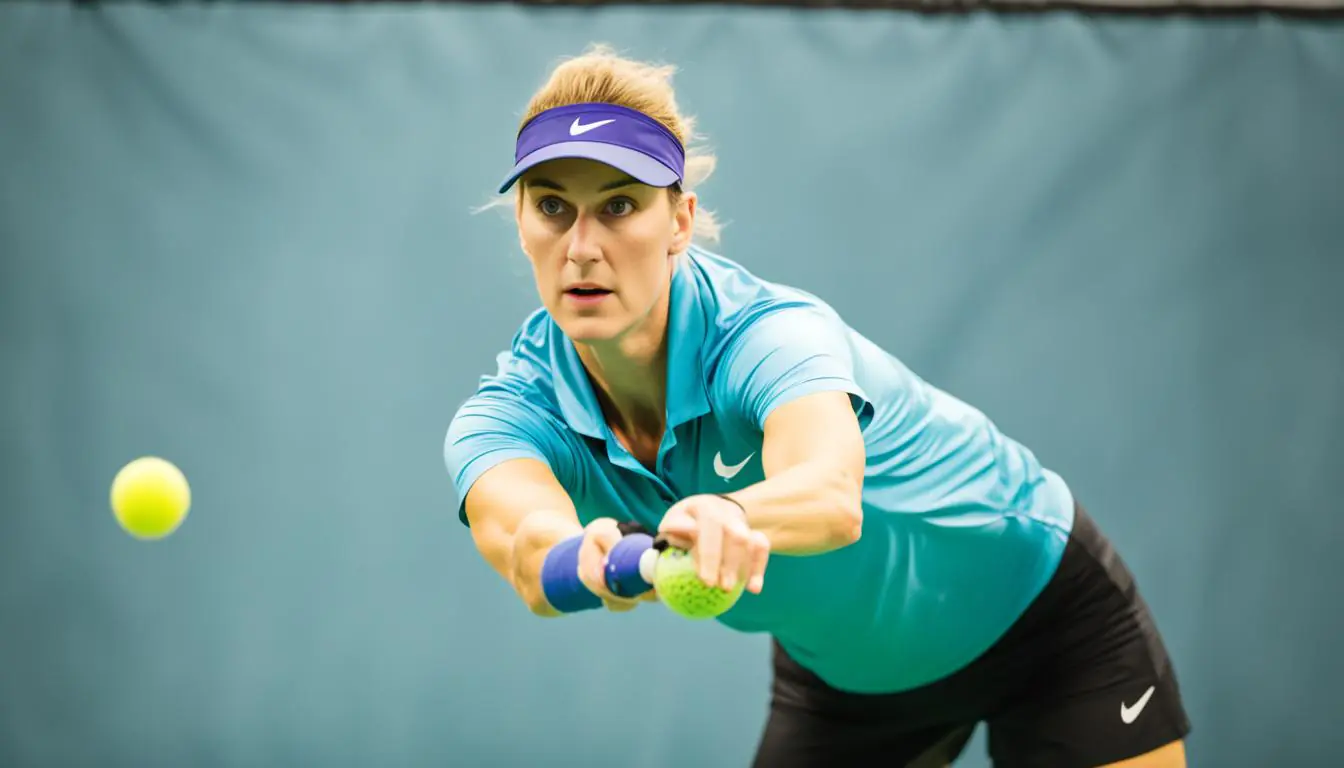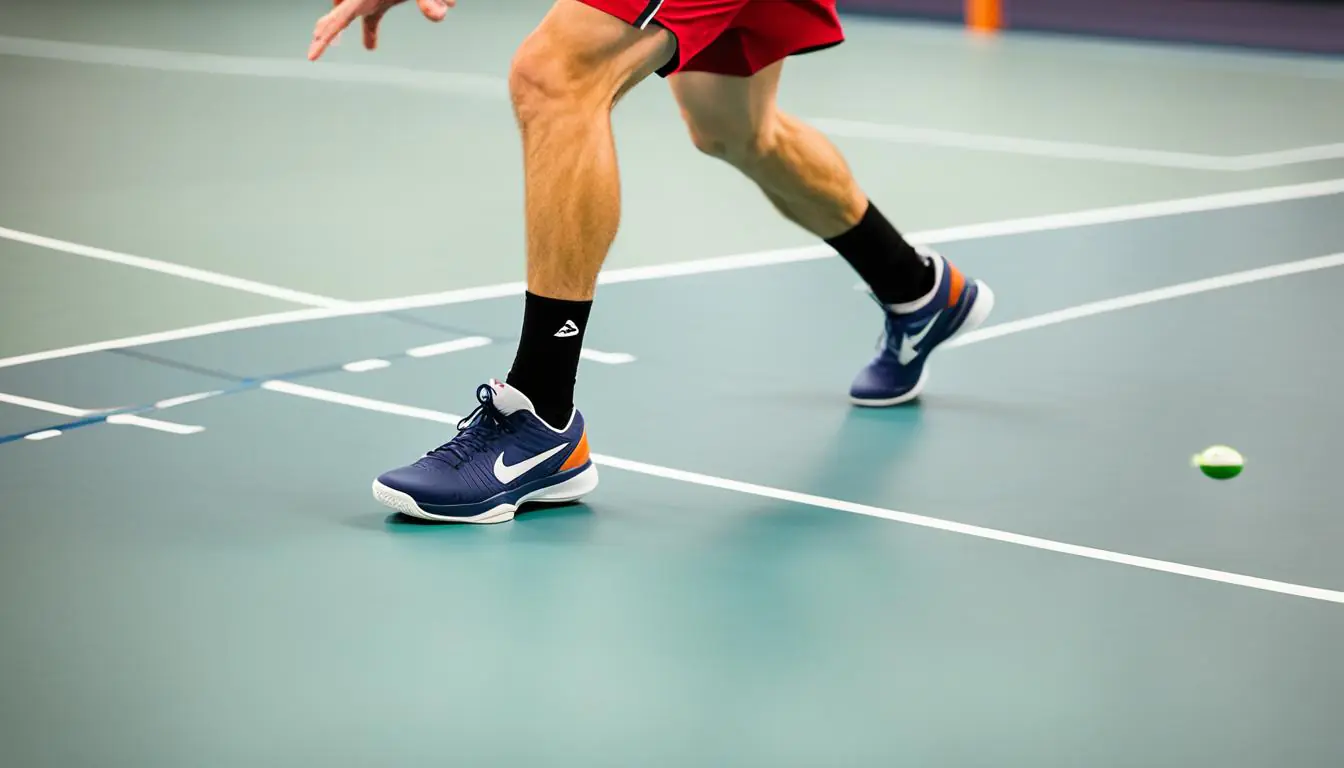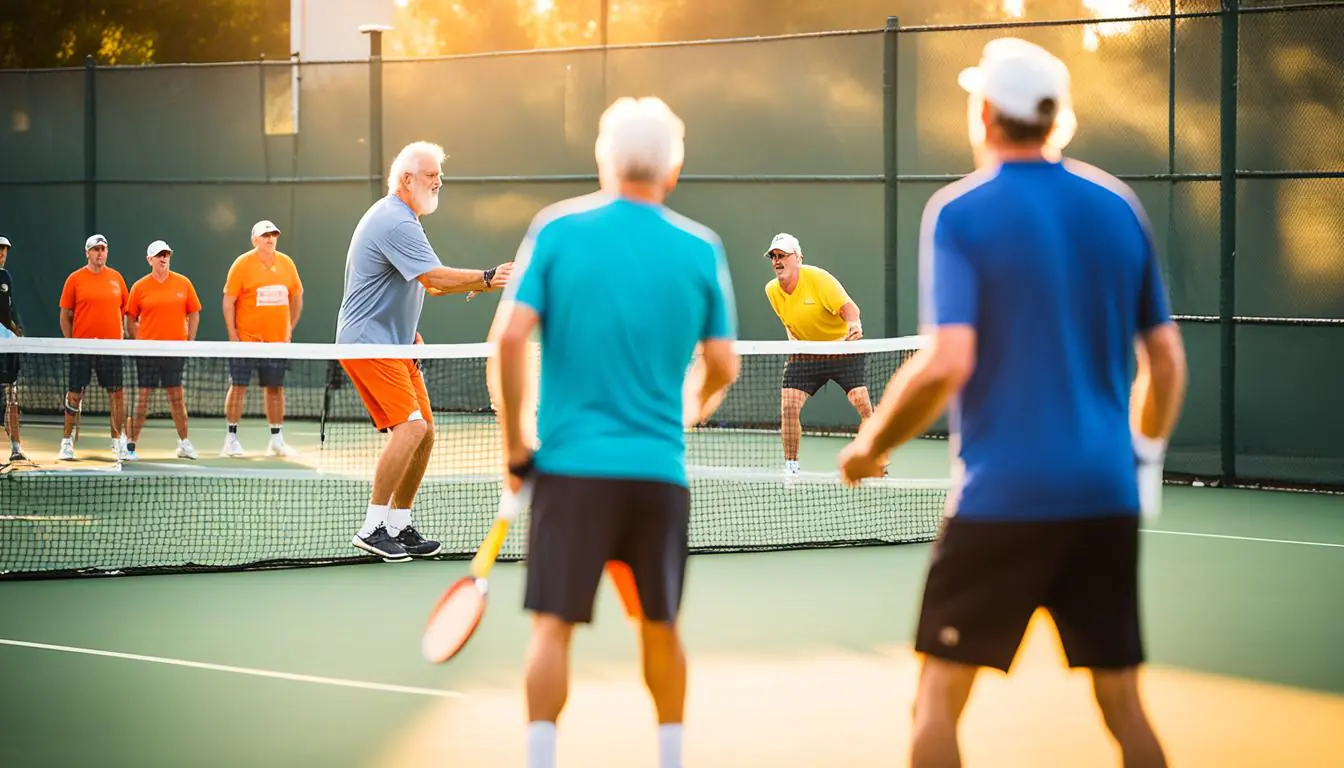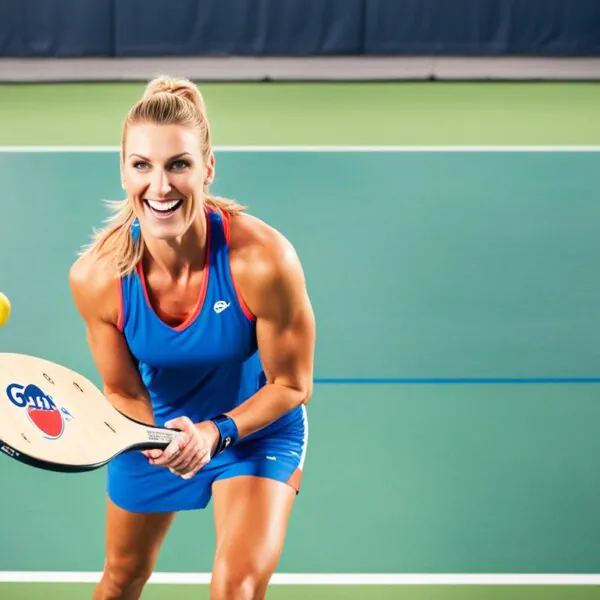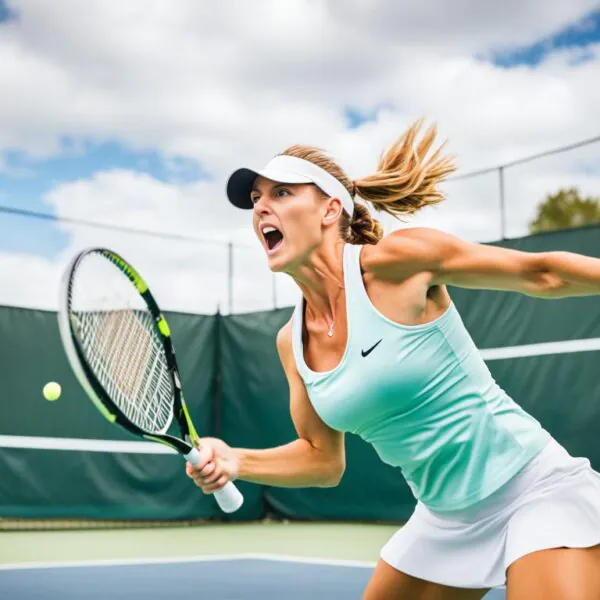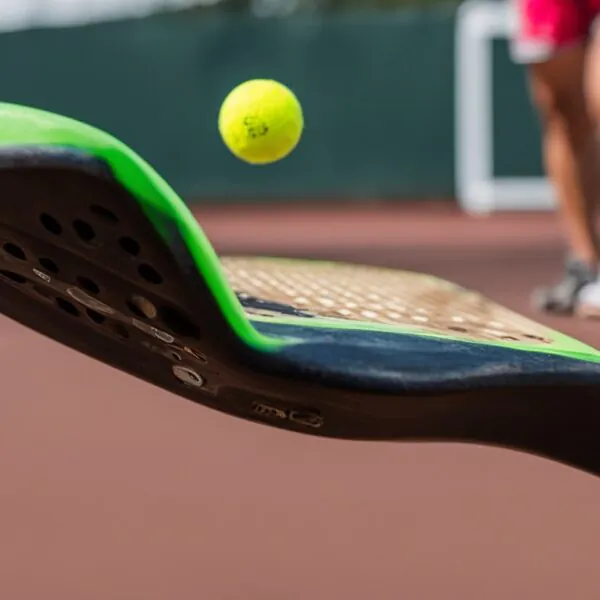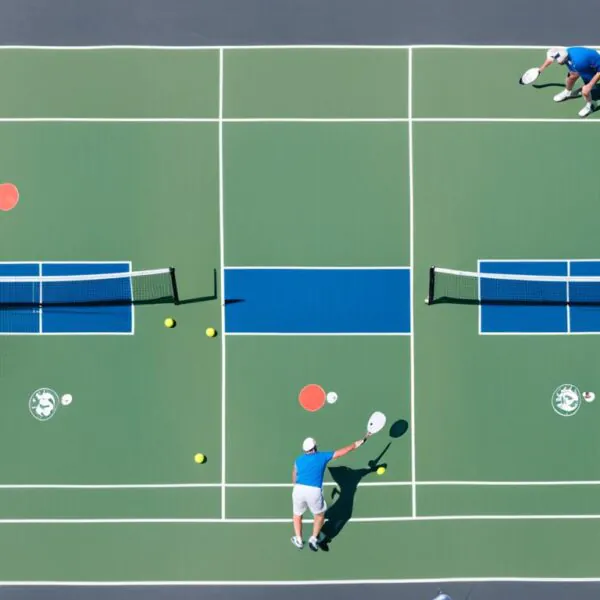Are you tired of losing points at the net? The key to winning is mastering the pickleball volley. It’s not hard as it seems. Get ready to improve your game and wow your opponents.
Key Takeaways
- Proper positioning and preparation are crucial for successful pickleball volleys.
- Mastering both the forehand and backhand volley techniques can give you a significant advantage.
- Developing precision and control in your volleys is key to dominating at the net.
- Incorporating the third shot drop into your arsenal can be a game-changer in advanced pickleball play.
- Maintaining racket stability and balance is essential for consistent and effective volleys.
Position and Preparation: Keys to Successful Pickleball Volleys
Learning to volley in pickleball starts with the right stance and getting ready. You need to watch the game and act fast. Stand in a low Volley Stance with your feet a bit wider than shoulder-width and knees bent. This gets you ready to move in any direction.
Your Racket Positioning should be in front of you, at waist level, with the side up. This helps you catch the ball easily.
This stance helps you cover your area and hit volleys well. Volley Footwork is very important. Practice staying in this position and moving back to it quickly after hitting the ball. This is key to being good at net play and volleying confidently.
Ready Stance and Footwork
- Adopt a low, balanced stance with knees bent and feet shoulder-width apart
- Be light on your toes, ready to move quickly in any direction
- Keep your weight distributed evenly, with your center of gravity low
- Practice shuffle steps and lateral movements to maintain your ready position
Racket Positioning
- Hold your racket at waist height, with the Pickleball Volley Grip slightly upright
- Keep the racket face open, ready to intercept the ball
- Maintain a relaxed, yet firm grip to allow for quick adjustments
- Adjust your Racket Positioning as the ball approaches to optimize your reach and control
Focus on your stance, footwork, and racket positioning to get better at pickleball volleys.
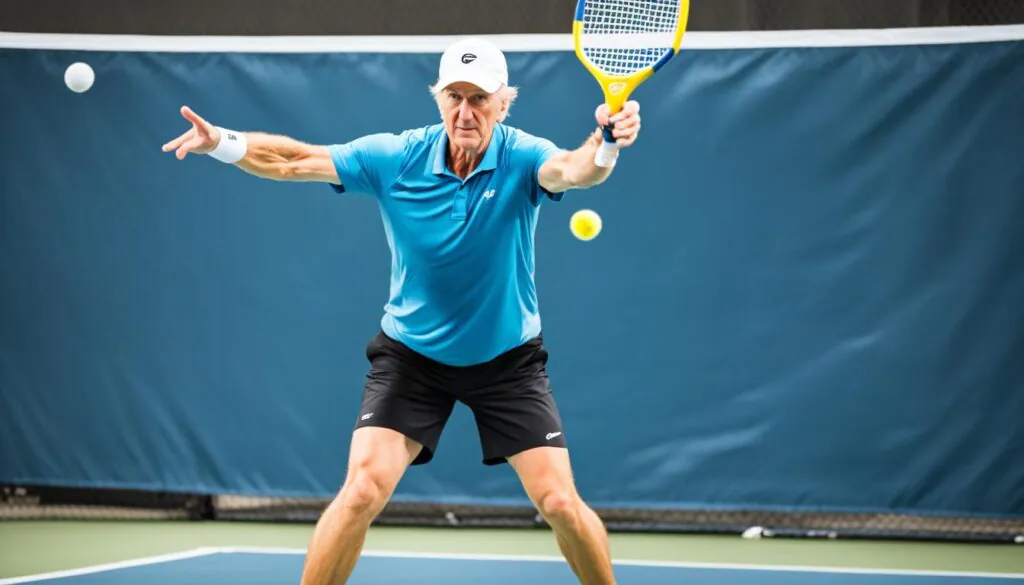
The Forehand Volley: Technique and Execution
Learning the forehand volley is key in pickleball. It’s important to know about the Forehand Volley Technique, Volley Grip, Volley Impact Point, and Volley Swing Path.
Racket Grip and Arm Position
Start by placing your racket in front of you. Keep your arm a bit bent and your palm down. This grip is called the continental grip and helps with stability. Keep your arm relaxed and balanced to avoid tension.
Impact Point and Swing Path
When the ball comes towards you, push the racket with a firm wrist motion. Aim for the impact point in front of you for better precision and power. Make sure the racket head is above your wrist for stability. Aim for a short, simple swing path. This lets you quickly hit the ball back at your opponent, surprising them.
Practice is key to getting the forehand volley right. Work on making your strokes regular and precise. Use drills and exercises to improve your skills. Mastering the forehand volley lets you control the net in pickleball matches.

Effective Pickleball Volley Techniques: The Backhand Volley
Mastering the backhand volley is key for strong defense in pickleball. It helps you return strong shots and take back control. The secret is in your Backhand Volley Technique, grip, and how you hit the ball.
To do the backhand volley, hold your racket with a firm wrist and keep your elbow in. Make sure the racket hits the sweet spot for better control. Hit the ball with a short, controlled motion, moving the racket as you want the shot to go.
The backhand volley is great for blocking strong shots and returning them precisely. It needs good timing and knowing your opponent’s moves. Practice makes you better at reflexes and coordination, making your backhand volley strong.
- Maintain a firm wrist and keep your elbow close to your body when executing the backhand volley.
- Orient the racket to strike the ball with the sweet spot for better control and accuracy.
- Use a short, controlled motion to direct the ball where you want it to go.
- Develop excellent anticipation and the ability to read your opponent’s game to be in the right position.
- Practice reflex and coordination exercises to master the backhand volley technique.
Work on the Backhand Volley Technique, grip, and execution to add this shot to your game. Remember, practice and patience are important. They help you get better at the backhand volley and improve your pickleball skills.
Solid Volleys: Precision and Control
To get good at pickleball volleys, you need to focus on precision and control. Your racket must be stable when you hit the ball. This lets you hit the ball hard and accurately, keeping it on track. Volley Precision and Volley Control are key to winning at the net.
Racket Stability and Grip Adjustment
Getting your racket stable starts with how you grip it. You need a grip that’s secure but can change with the game. For strong volleys, grip it tighter for control. For soft shots, grip it looser.
Keep your racket movement short and don’t move it back too much. This helps you react fast and hit the ball right back.
Body Position and Balance
Having the right Volley Body Position is key for staying stable and balanced. Keep your weight a bit forward, ready to move in any direction. This stance helps you hit the ball well, whether you’re going for a strong volley or a soft touch shot.
By working on Racket Stability, Volley Grip, and Volley Body Position, you’ll get better at hitting solid volleys. With practice, these skills will come naturally. This will let you control the net and lead the game.
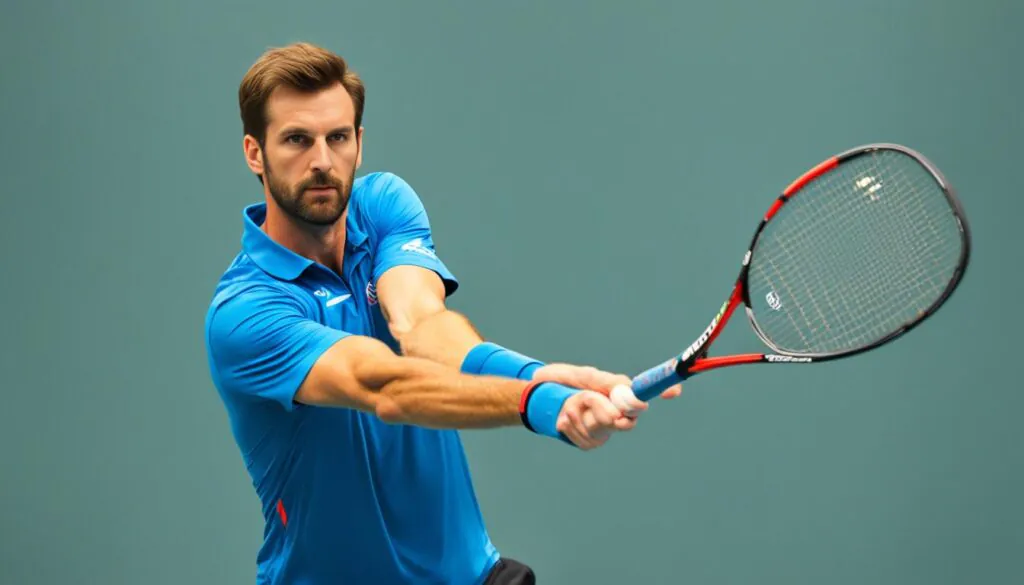
Conclusion
Learning pickleball volleys can make you a top player at the net. This article has shown us how to improve our game. We’ll learn how to hit forehand and backhand volleys well.
We’ll also get better at placing our volleys accurately. With regular Pickleball Volley Drills and hard work, our volleys will be key to winning. This lets us control the game and make our opponents defend.
Knowing where to hit the ball and using smart Pickleball Volley Tactics helps us stay on top. We’ll get better at the volley shot by working on our stance, racket position, and movement. This way, we can hit different types of volleys well.
Practicing with a partner or against a wall will make our volley skills better. It will also make us quicker and more aware of the game. Working with our doubles partner will help us play together better.
By following this guide, we can take our pickleball game to the next level. We’ll become strong players at the net.
